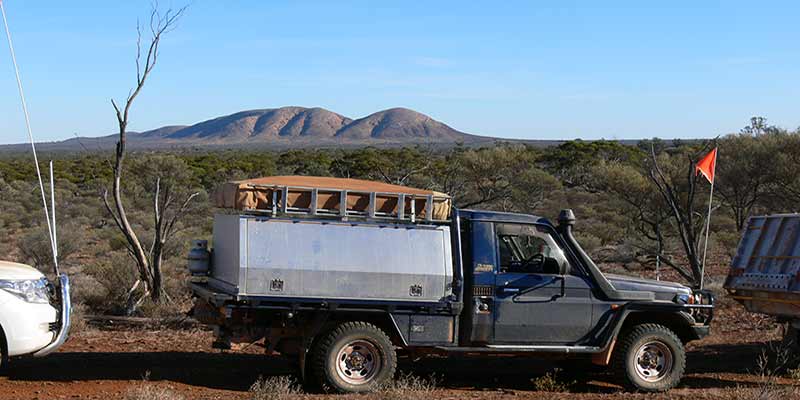Googs Track in South Australia
Googs Track is an adventurous 4WD track of sand dunes and claypans that traverses the Great Victoria Desert between Ceduna and the Trans Australian Railway line. From the Eyre Highway, a formed gravel road leads through pastoral country to the original homestead of the Denton family who built Googs Track.
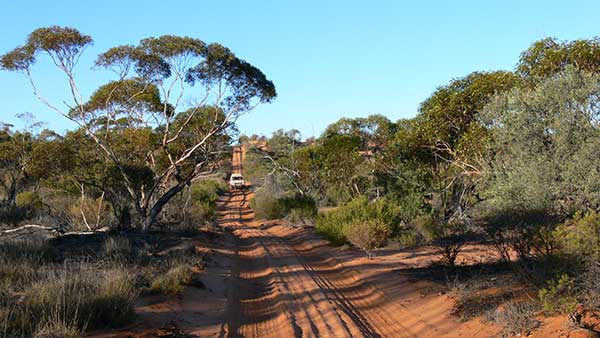
The story of Googs Track is an interesting one. John ‘Goog’ Denton, his wife Jenny and their three children lived about 30 kilometres north of Ceduna on a property named Lone Oak. For years, Goog and Jenny had thought about putting in a road north to the to the railway Trans Access Road and Tarcoola, approximately 160 kilometres away. Eventually in June 1973 they began the huge task of building the road.
Initially track clearing was carried out using a Fordson tractor with a front end loader blade, but as the going got tougher and the sand hills bigger and steeper, a bulldozer was employed.
Googs Track is usually tackled from the south. As well as being a great adventure, there are many highlights to see.
At first the track is easily negotiated over flat firm ground across small sand dunes. The Great Victoria Desert is well vegetated throughout, and eucalypts and wattles are common here.
Goog memorial
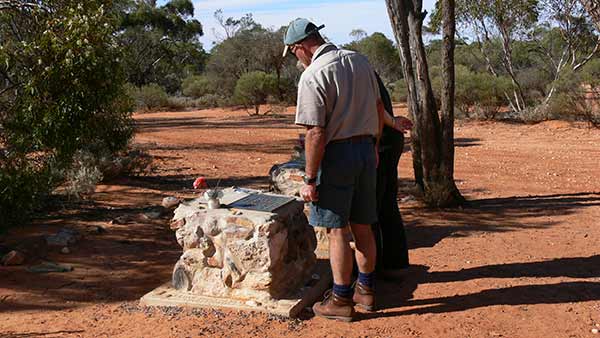
After approximately 50 kilometres, the track reaches an intersection. There are two memorials here. One is for Jenny and Goog’s son Martin, known as Dinger, and the other is for Goog himself. Both lost their lives in accidents in the vicinity of the track, but at different times and after the track had been completed.
It has become a tradition to leave a coin, either on the memorials or stuck into the trunks of old casuarinas still growing here. This is a symbol of thanks and respect to Goog and Dinger for the tireless work they put in to construct the road that so many 4-wheel drive travellers enjoy today.
Googs Lake is a short deviation and only 4 kilometres away. This is an ideal camping spot, for exploring the Yumbarra Conservation Park and nearby rockhole, or for just relaxing around the serene lake.
From the intersection Googs Track heads off in a northerly direction. There are plenty of larger dunes on this section of track which travellers usually enjoy. Some of the larger dunes are quite tricky. But that’s the fun of travelling in sand dune country.
Soon, the track passes through the Yellabinna Wilderness Protection Area. This area of approximately 500,000 hectares protects one of the largest and most intact natural areas in South Australia. It’s particularly important for the conservation of natural vegetation communities, as well as culturally significant sites such as Mt Finke.
Mt Finke
Mt Finke was named in 1858 by explorer John McDouall Stuart, after a friend William Finke who was associated with mining and pastoral activities.
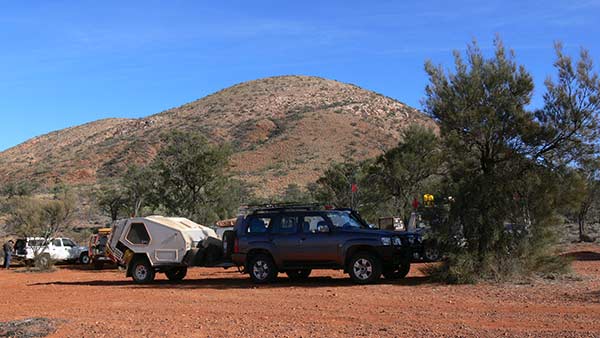
At approximately 370 metres high, Mt Finke is a major landmark that can be spotted from the highest dunes in the desert landscape. Up closer, stunning views of the mountain appear from the track.
A signposted side track leads to the base of Mt Finke where there is a picnic and camping spot. Some energetic people like to climb the peak and are rewarded with amazing views from the craggy summit.
Another side track leads back to Googs Track, crossing a salt lake and clay pan on the way.
Now it is approximately 30 kilometres to the east-west Trans Australian Railway and the railway access road.
East to the Stuart Highway
Cross the railway line with care, you never know when a train might be coming. Once the access road is reached, turn right for Tarcoola, Kingoonya and Glendambo. Turning left and travelling on the access road is forbidden in this section.
The old gold mining town of Tarcoola is kept alive by mining activities in the area. But its famous red pub has little or no chance of re-opening.
In Kingoonya, there is still evidence of a much busier past when this was on the main route to Western Australia. These days only a few businesses survive mainly supported by travellers from Googs Track.
Established in the early 1900s as a railway support town, Kingoonya played a significant role in the construction of the Trans Australian Railway. It is reputed to have had the widest main street in Australia with cricket matches played on it.
Travelling further east from Kingoonya will bring the traveller onto the Stuart Highway at the roadhouse at Glendambo. Here is an opportunity to stock up on fuel and other supplies before heading north or south for your next adventure.
What you need to know
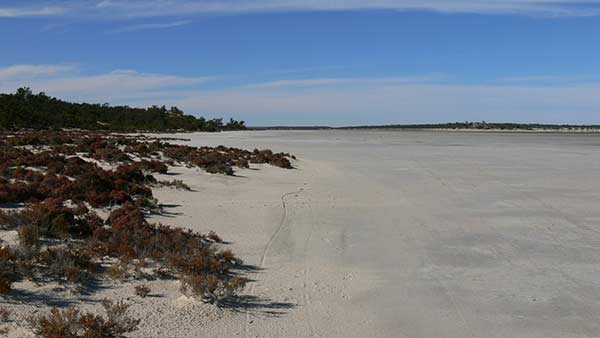
You will need a 4-wheel drive with low range capability. While generally Googs Track is not too difficult, use high range for the sandy sections and low range when the dunes become tricky.
Carry sufficient fuel for at least 500 kilometres and more for any 4-wheel driving. Top up in Ceduna. There is no fuel at Tarcoola and may not be any at Kingoonya.
Ceduna has a range of accommodation options including caravan parks. Glendambo and Kingoonya also offer hotel and camping options. On Googs Track there are ideal spots at Googs Lake and Mt Finke. There are plenty of opportunities for bush camping along the track.
Go with friends in other vehicles to share the experience.
Best time to go – March-April through to September-October. We have travelled Googs Track 3 times but all trips were in April and May when the weather was mostly mild and sunny. The summer months would be too hot.
You can see more of Googs Track in our video Long Road to the Alice.
